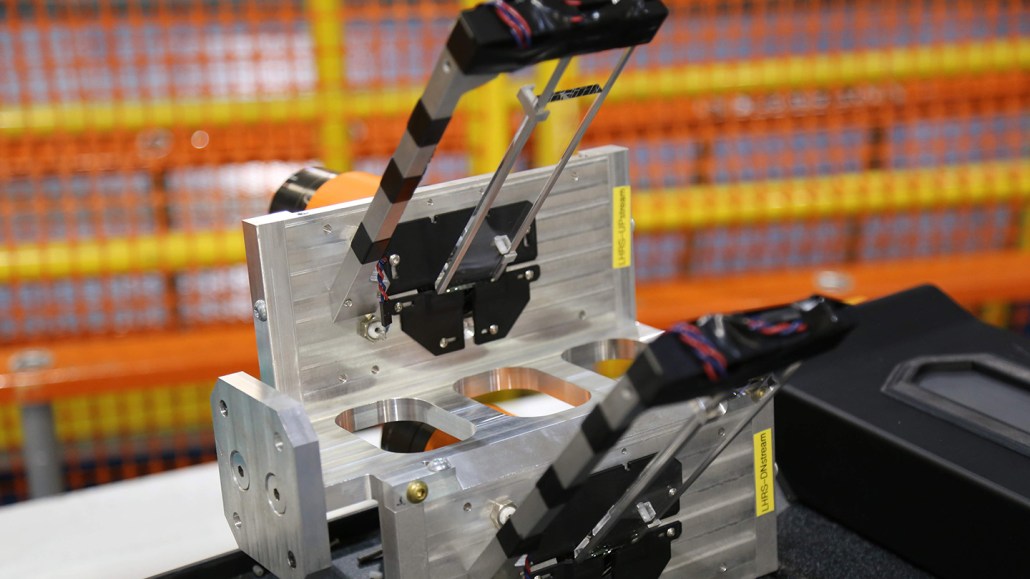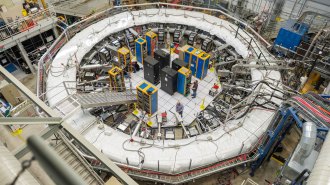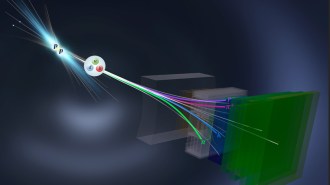The thickness of lead’s neutron ‘skin’ has been precisely measured
The atom’s nucleus is surrounded by a neutron shell just 0.28 trillionths of a millimeter thick

By scattering electrons off of lead, the Lead Radius Experiment, or PREX-II, measures the thickness of a “skin” of neutrons that surrounds the atomic nucleus. The experiment (a central component shown) detects electrons using quartz crystals (transparent diagonal rectangles).
Kent Paschke







